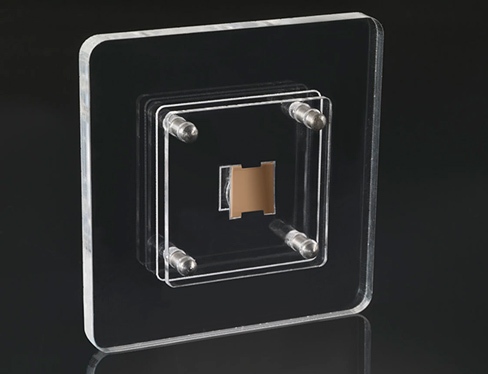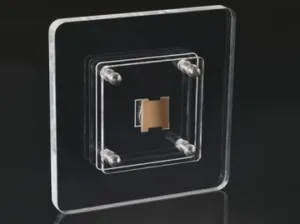During CES 2016, I had a chance to discuss the Novasentis haptic feedback solution in more detail with the company. In October of 2014, Novasentis announced its polymer based solution and it was time to see how far they have come since.
There is no change to the core technology that is still based on a material group developed and patented by Penn State University. Novasentis holds the exclusive license for these patents that cover a material group that so far shows the highest energy density of such materials. The polymer reacts to an applied voltage with a mechanical elongation. This response is based on a rotation in a polymer chain that has halogen atoms in various places. Once the molecule rotates and the larger halogen atoms align the polymer chain is stretched, leading to a measurable elongation. This response is very fast and allows the actuator to respond in a wide frequency band up to 20 kHz.
Novasentis works with a variety of companies to create this polymer film. Arkema makes the powder resin, Armor produces the film and Kemet makes the actual actuator. This approach allows the company to ramp up production quickly with investments in actual manufacturing facilities.
 Source: Novasentis
Source: Novasentis
These types of electro-mechanical polymers (EMP) are used to build artificial muscles, for example, but could also be used for haptic feedback solutions. In this particular implementation, the required voltage to achieve a measurable deformation is in the order of 70V to 220V depending on the application.
While Samsung is an investor in the company, first tests of putting the actuator behind a flexible display were not very promising. While the technology produces measurable deformation through an AMOLED panel, any cover glass diminishes the cover glass movement below the required threshold. Since the current actuator uses metal electrodes on top and bottom, the actuator cannot be placed on top of the display.
In their current form, the actuators from Novasentis are not usable together with a flexible display panel and the focus has shifted to non-transparent touch panel solutions. They will have first engineering samples in the first quarter of 2016 and expect first consumer products by the end of 2016. – NH

